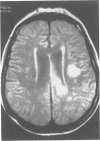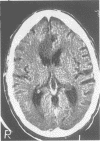Abstract
A prospective clinical and radiological correlation study was performed to determine the frequency, and the clinical and radiological features of callosal infarction. From 1 January 1993 to the end of December 1993 282 cases of cerebral infarction seen in the Neurology service of the University Hospital of Dijon were studied prospectively. Eight cases with callosal ischaemic lesions were identified by CT and MRI. A callosal disconnection syndrome occurred in only five of eight patients, related to a single, large infarct or several infarctions in the anterior part of the corpus callosum. Clinical features were characterised by left ideomotor apraxia, construction apraxia, and left agraphia in all five cases. Alien hand was noted in only two cases. There were gait disorders in three cases with MRI features of multiple lacunes in a large part of the corpus callosum, and also the subcortical areas of both hemispheres. It is emphasised that callosal infarctions are not rare and that they contribute to the clinical features of strokes. As well as the classic incomplete callosal disconnection syndrome, these callosal ischaemic lesions may induce non-specific gait disorders.
Full text
PDF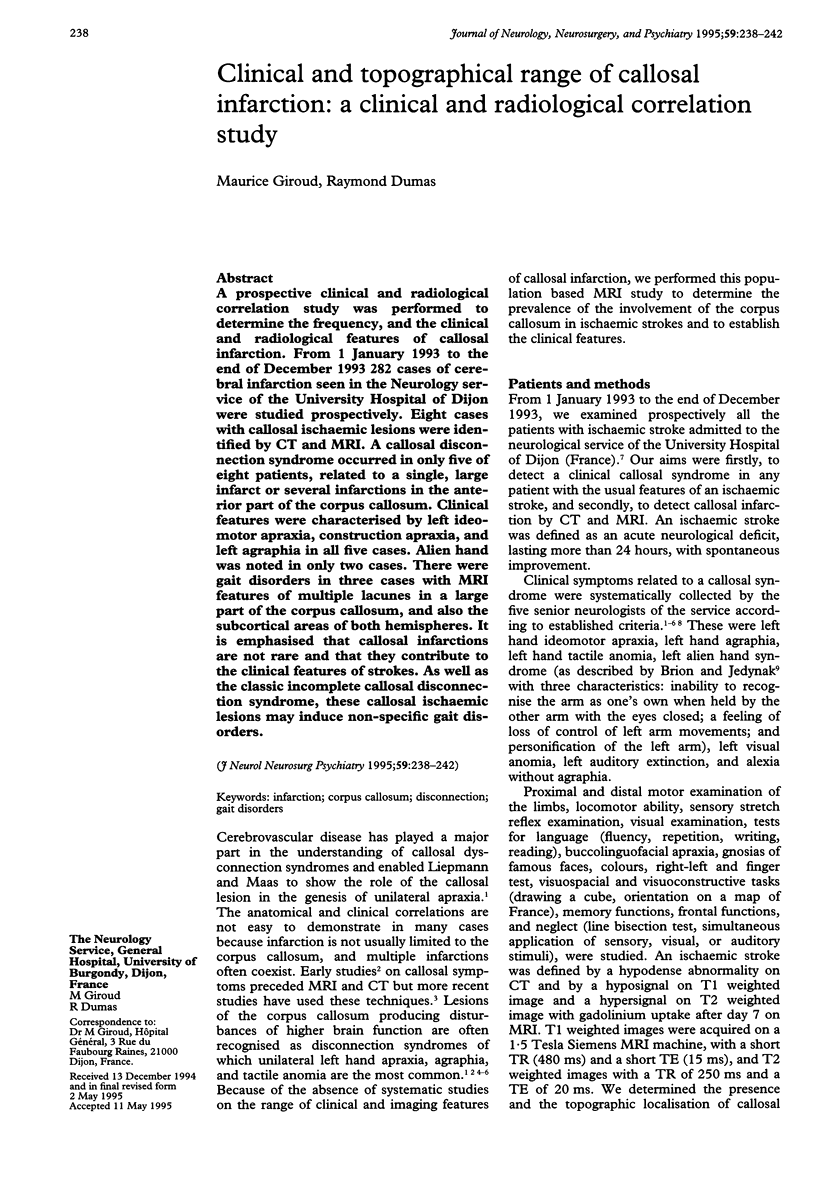
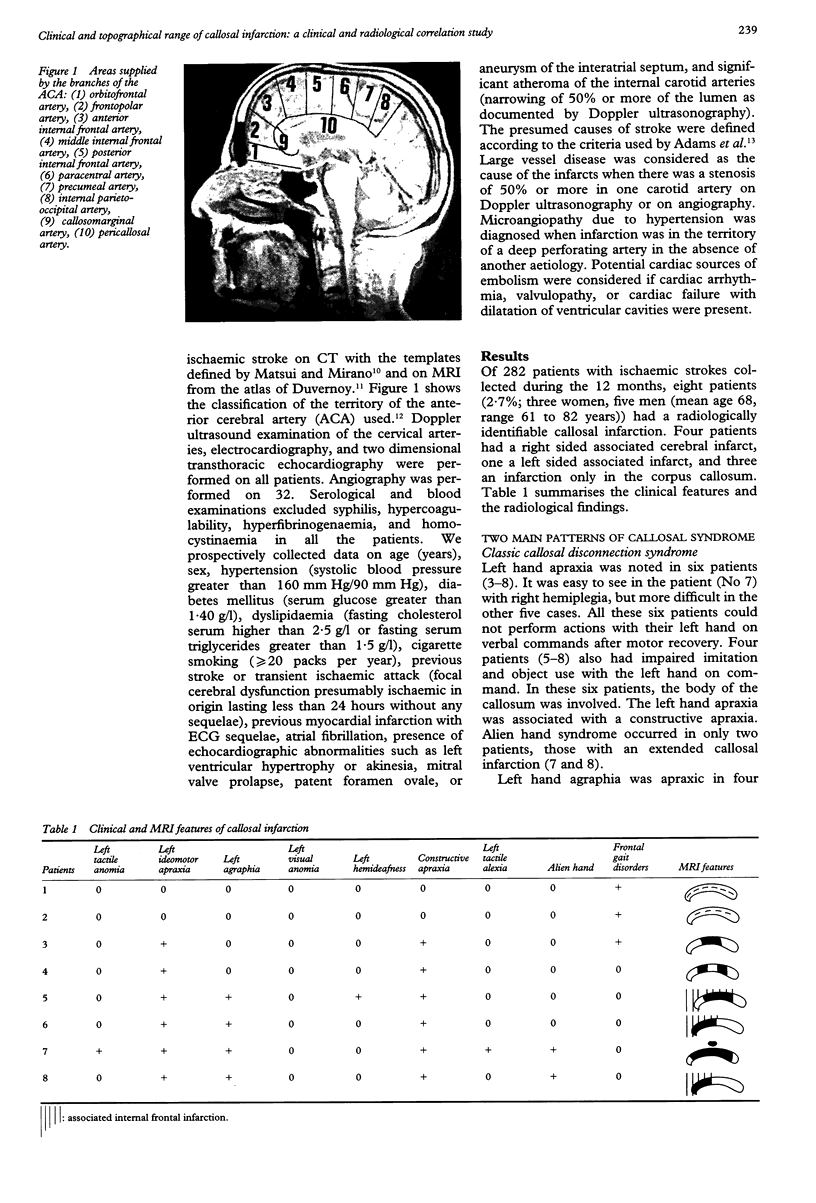
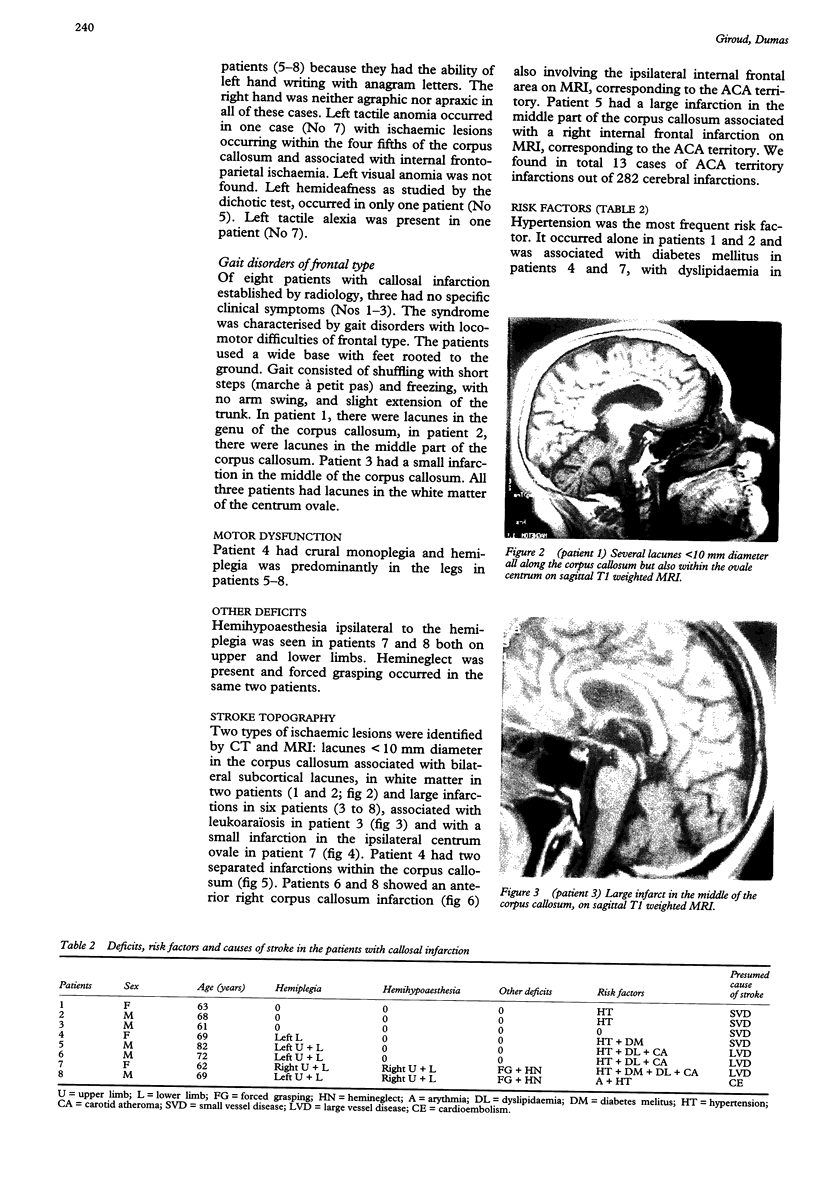
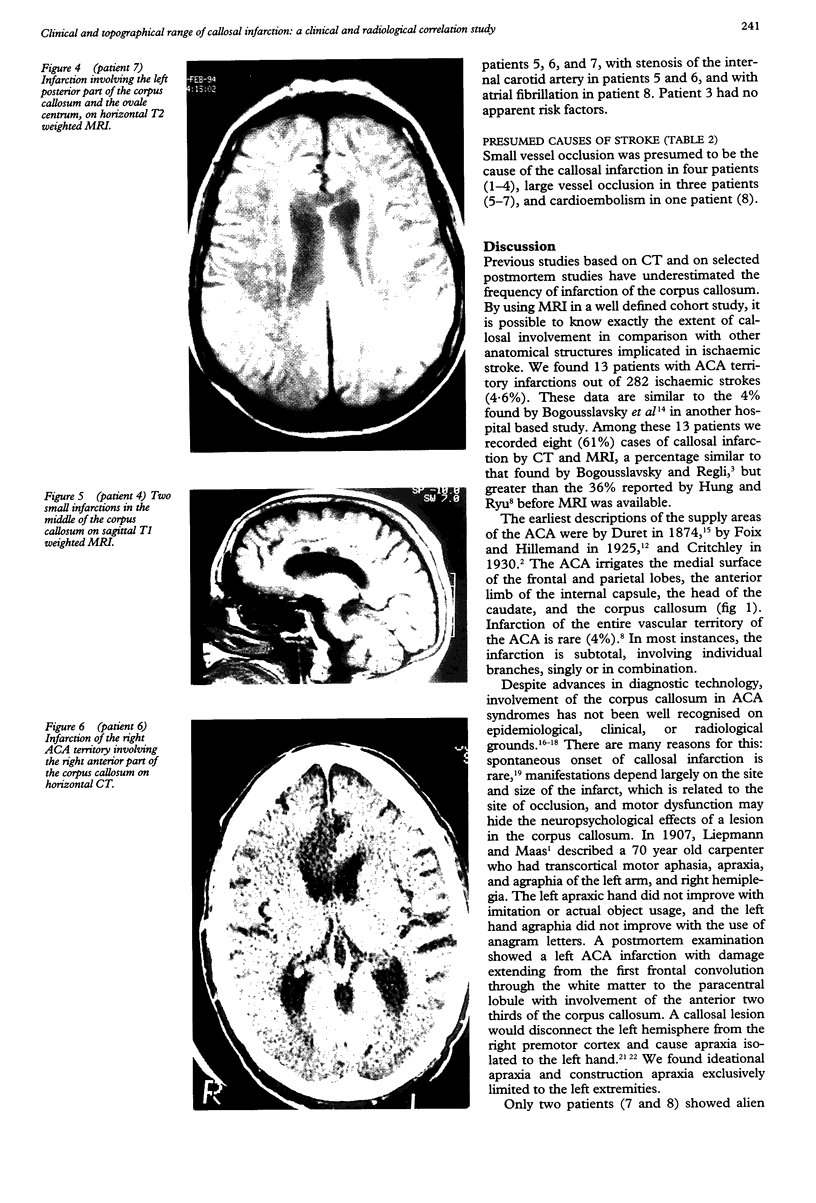
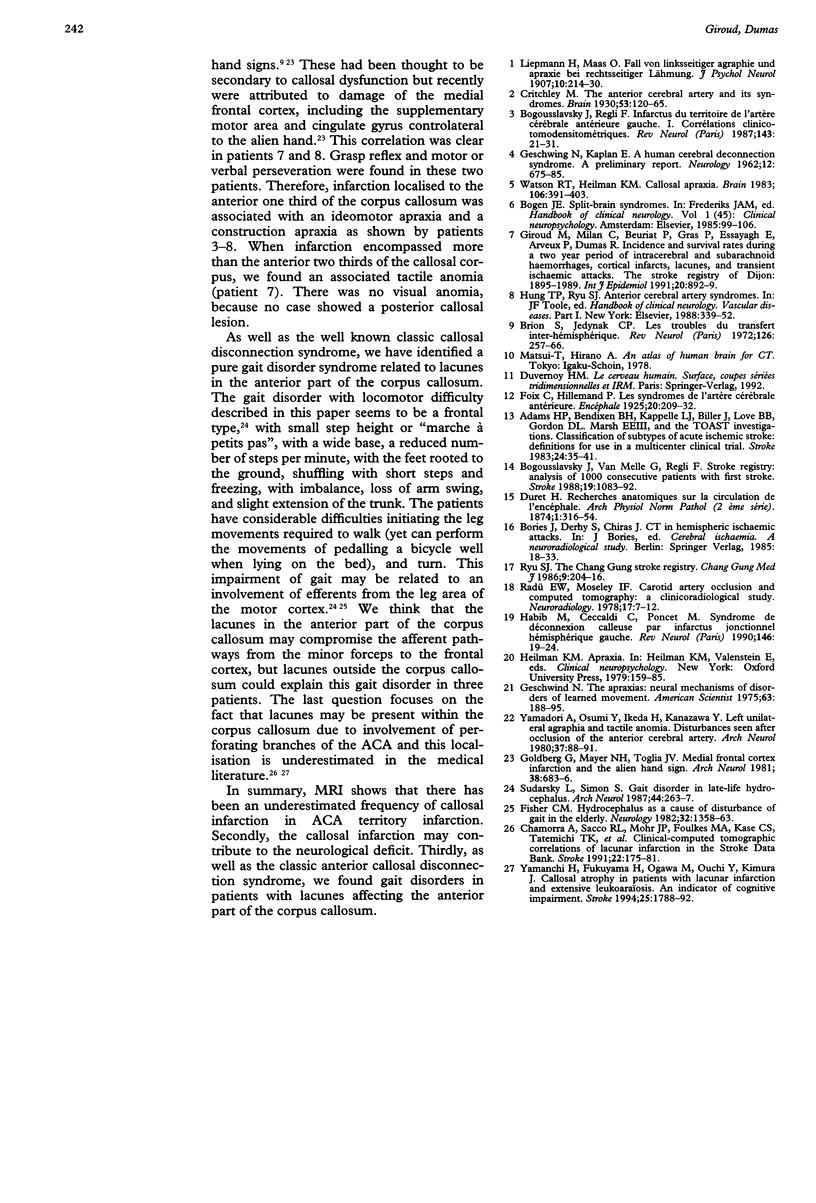
Images in this article
Selected References
These references are in PubMed. This may not be the complete list of references from this article.
- Adams H. P., Jr, Bendixen B. H., Kappelle L. J., Biller J., Love B. B., Gordon D. L., Marsh E. E., 3rd Classification of subtype of acute ischemic stroke. Definitions for use in a multicenter clinical trial. TOAST. Trial of Org 10172 in Acute Stroke Treatment. Stroke. 1993 Jan;24(1):35–41. doi: 10.1161/01.str.24.1.35. [DOI] [PubMed] [Google Scholar]
- Bogousslavsky J., Regli F. Infarctus du territoire de l'artère cérébrale antérieure gauche. I. Corrélations clinico-tomodensitométriques. Rev Neurol (Paris) 1987;143(1):21–31. [PubMed] [Google Scholar]
- Bogousslavsky J., Van Melle G., Regli F. The Lausanne Stroke Registry: analysis of 1,000 consecutive patients with first stroke. Stroke. 1988 Sep;19(9):1083–1092. doi: 10.1161/01.str.19.9.1083. [DOI] [PubMed] [Google Scholar]
- Brion S., Jedynak C. P. Troubles du transfert interhémisphérique (callosal disconnection). A propos de trois observations de tumeurs du corps calleux. Le signe de la main étrangére. Rev Neurol (Paris) 1972 Apr;126(4):257–266. [PubMed] [Google Scholar]
- Chamorro A., Sacco R. L., Mohr J. P., Foulkes M. A., Kase C. S., Tatemichi T. K., Wolf P. A., Price T. R., Hier D. B. Clinical-computed tomographic correlations of lacunar infarction in the Stroke Data Bank. Stroke. 1991 Feb;22(2):175–181. doi: 10.1161/01.str.22.2.175. [DOI] [PubMed] [Google Scholar]
- Fisher C. M. Hydrocephalus as a cause of disturbances of gait in the elderly. Neurology. 1982 Dec;32(12):1358–1363. doi: 10.1212/wnl.32.12.1358. [DOI] [PubMed] [Google Scholar]
- GESCHWIND N., KAPLAN E. A human cerebral deconnection syndrome. A preliminary report. Neurology. 1962 Oct;12:675–685. doi: 10.1212/wnl.12.10.675. [DOI] [PubMed] [Google Scholar]
- Geschwind N. The apraxias: neural mechanisms of disorders of learned movement. Am Sci. 1975 Mar-Apr;63(2):188–195. [PubMed] [Google Scholar]
- Giroud M., Milan C., Beuriat P., Gras P., Essayagh E., Arveux P., Dumas R. Incidence and survival rates during a two-year period of intracerebral and subarachnoid haemorrhages, cortical infarcts, lacunes and transient ischaemic attacks. The Stroke Registry of Dijon: 1985-1989. Int J Epidemiol. 1991 Dec;20(4):892–899. doi: 10.1093/ije/20.4.892. [DOI] [PubMed] [Google Scholar]
- Goldberg G., Mayer N. H., Toglia J. U. Medial frontal cortex infarction and the alien hand sign. Arch Neurol. 1981 Nov;38(11):683–686. doi: 10.1001/archneur.1981.00510110043004. [DOI] [PubMed] [Google Scholar]
- Habib M., Ceccaldi M., Poncet M. Syndrome de déconnexion calleuse par infarctus jonctionnel hémisphérique gauche. Rev Neurol (Paris) 1990;146(1):19–24. [PubMed] [Google Scholar]
- Radü E. W., Moseley I. F. Carotid artery occlusion and computed tomography. A clinicoradiological study. Neuroradiology. 1978 Nov 24;17(1):7–12. doi: 10.1007/BF00345262. [DOI] [PubMed] [Google Scholar]
- Ryu S. J. The Chang Gung stroke registry: 1980. Changgeng Yi Xue Za Zhi. 1986 Sep 20;9(3):204–216. [PubMed] [Google Scholar]
- Sudarsky L., Simon S. Gait disorder in late-life hydrocephalus. Arch Neurol. 1987 Mar;44(3):263–267. doi: 10.1001/archneur.1987.00520150019012. [DOI] [PubMed] [Google Scholar]
- Watson R. T., Heilman K. M. Callosal apraxia. Brain. 1983 Jun;106(Pt 2):391–403. doi: 10.1093/brain/106.2.391. [DOI] [PubMed] [Google Scholar]
- Yamadori A., Osumi Y., Ikeda H., Kanazawa Y. Left unilateral agraphia and tactile anomia. Disturbances seen after occulusion of the anterior cerebral artery. Arch Neurol. 1980 Feb;37(2):88–91. doi: 10.1001/archneur.1980.00500510046007. [DOI] [PubMed] [Google Scholar]
- Yamauchi H., Fukuyama H., Ogawa M., Ouchi Y., Kimura J. Callosal atrophy in patients with lacunar infarction and extensive leukoaraiosis. An indicator of cognitive impairment. Stroke. 1994 Sep;25(9):1788–1793. doi: 10.1161/01.str.25.9.1788. [DOI] [PubMed] [Google Scholar]






